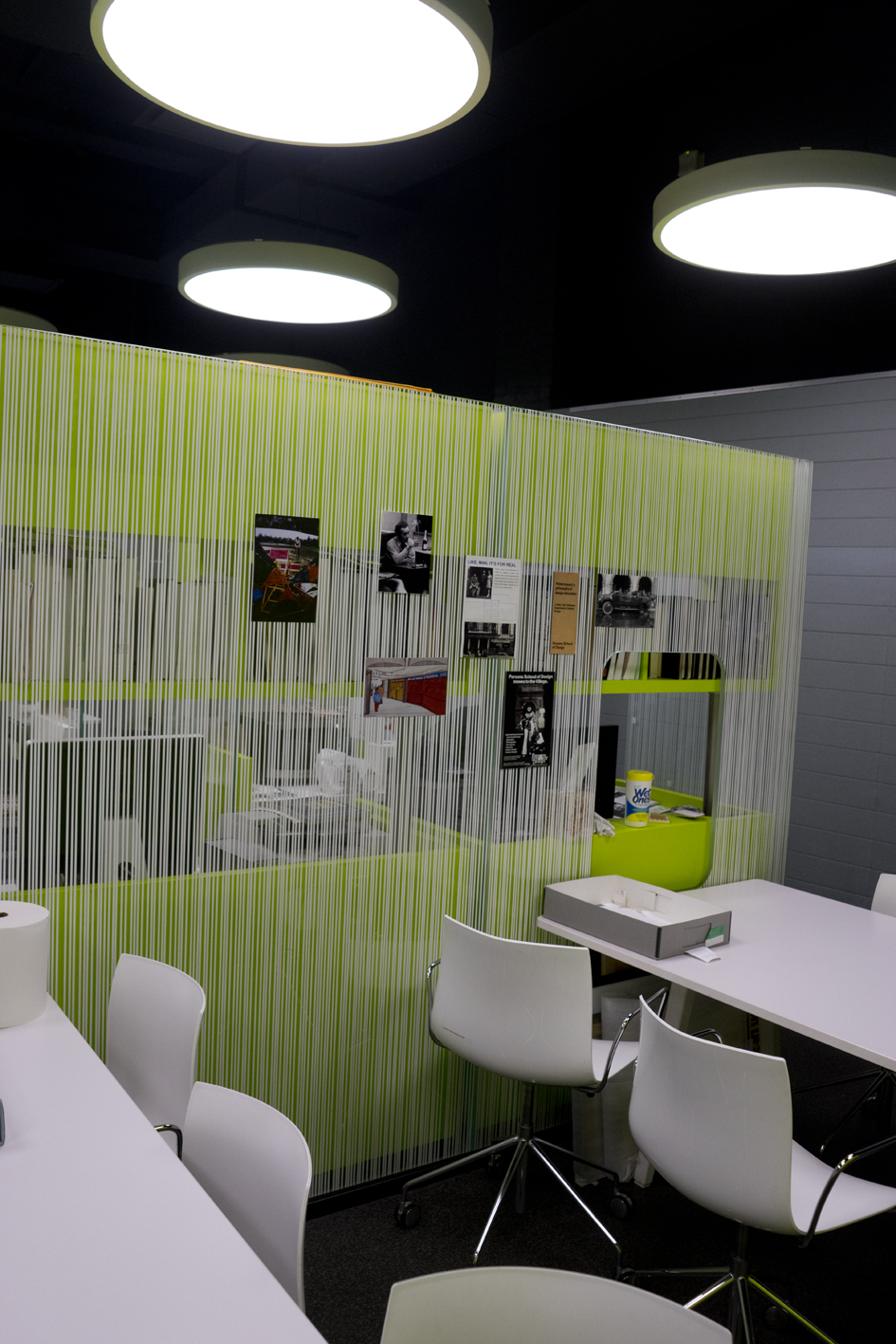
Every day, I encounter the glass barrier with white vertical stripes bolted into the floor between my workstation and the New School Archives and Special Collection’s researcher tables.
Casual visitors to the Archives often compliment our staff on the barrier. It is a striking design element within the Archives’ space. Its aesthetic value, however, does not enhance its utilitarian value, specifically its utility to me as an archivist and to researchers.
I suspect the barrier’s intention is to demarcate the “private” office area from the “public” research area, even though true privacy is impossible in open plan construction. The barrier hampers my ability to see researchers’ faces clearly, and they cannot clearly see my face when I am sitting at my desk, which faces the research area tables. Straining, we discern one another’s faces in the transparent spaces between the white lines.
Why am I distressed about my inability to clearly see Archives’ patrons and vice versa?
A foundational principle of reference work (an umbrella term for helping library and archives patrons) is acknowledging the role of non-verbal cues in information-seeking behavior. Good reference archivists do not wait for the question to be articulated before assisting a researcher. A quick, searching glance may be all I need to ask, “Do you have any questions I can answer for you?;”a casual, “How’s it going over here?” can open the door to dialogue. With the barrier, I sometimes feel like I am conducting an ineffective surveillance operation from behind a curtain of white stripes.
One adaptive strategy is to show researchers my desk’s location when I introduce myself (“I will be sitting right over here.”). I also make sure that they know my name and encourage them to call out to me for help if they need it, even though I am sitting a meter or two away. This request can be disorienting because of popular stereotypes of archives as quiet places where researchers are discouraged from noise-making.
These strategies are not wholly effective measures, however, because they require researchers to articulate a need. One of the first things a library school student learns is that many information needs are not acted upon. It’s incumbent upon the librarian or archivist to perceive the need’s presence. In an ideal archives, my view would be completely unobstructed and these preliminaries would be superfluous, although I would probably still emphasize that asking for help would not be bothering or disturbing me, and there would be a completely closed off, non-public space, too.
The barrier and its stripes represent a Potemkin Village of employee privacy, gesturing toward the desire for privacy in a space that functionally prohibits its existence.
What would a different configuration of space that would facilitate beneficial research behaviors on the part of the patron and the archivist look like?
Do researchers care? Researchers, what do you think?
What are the roles and the effects of open plan construction in different spaces at the university?
Jenny Swadosh
Staff, The New School

